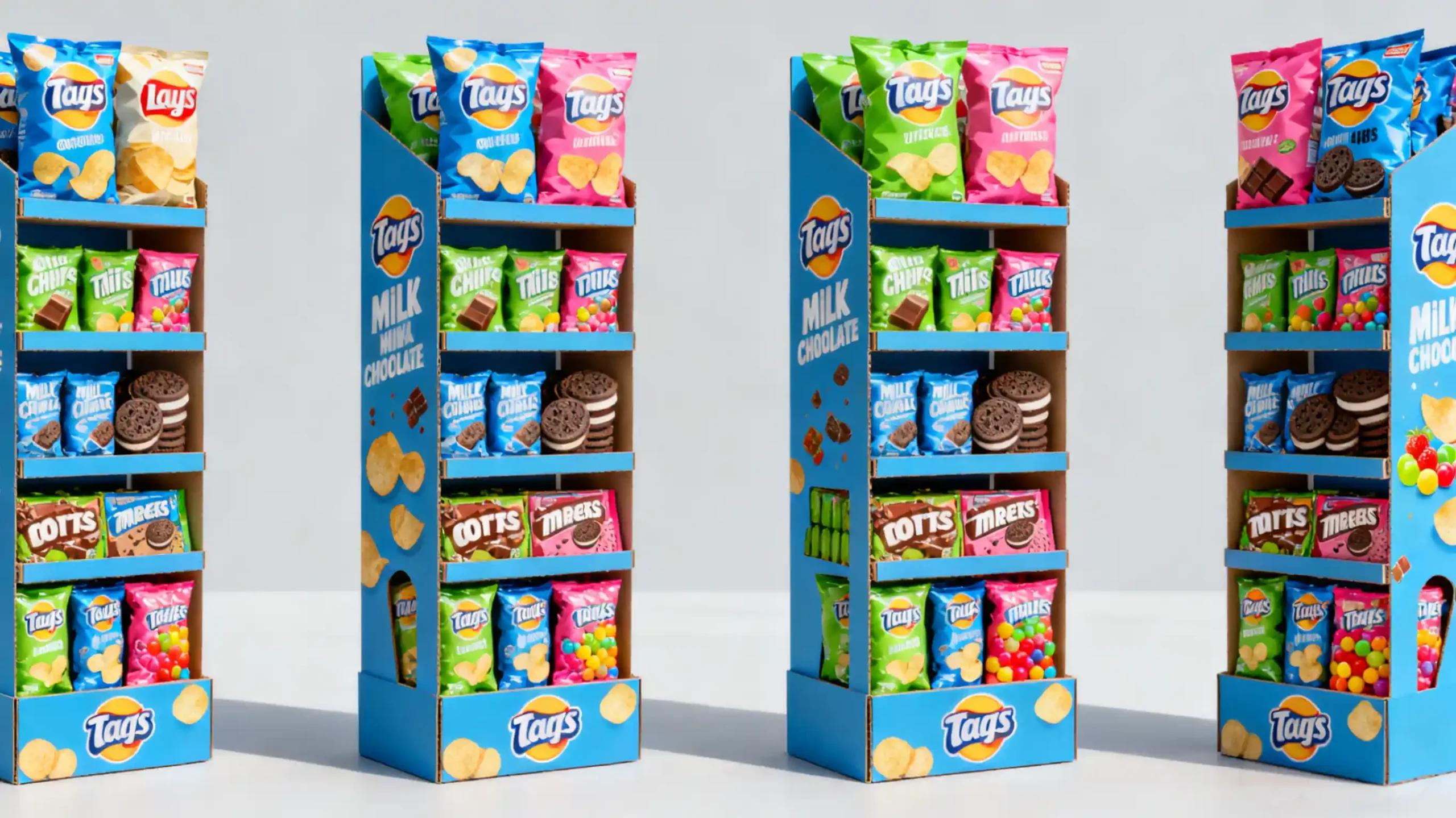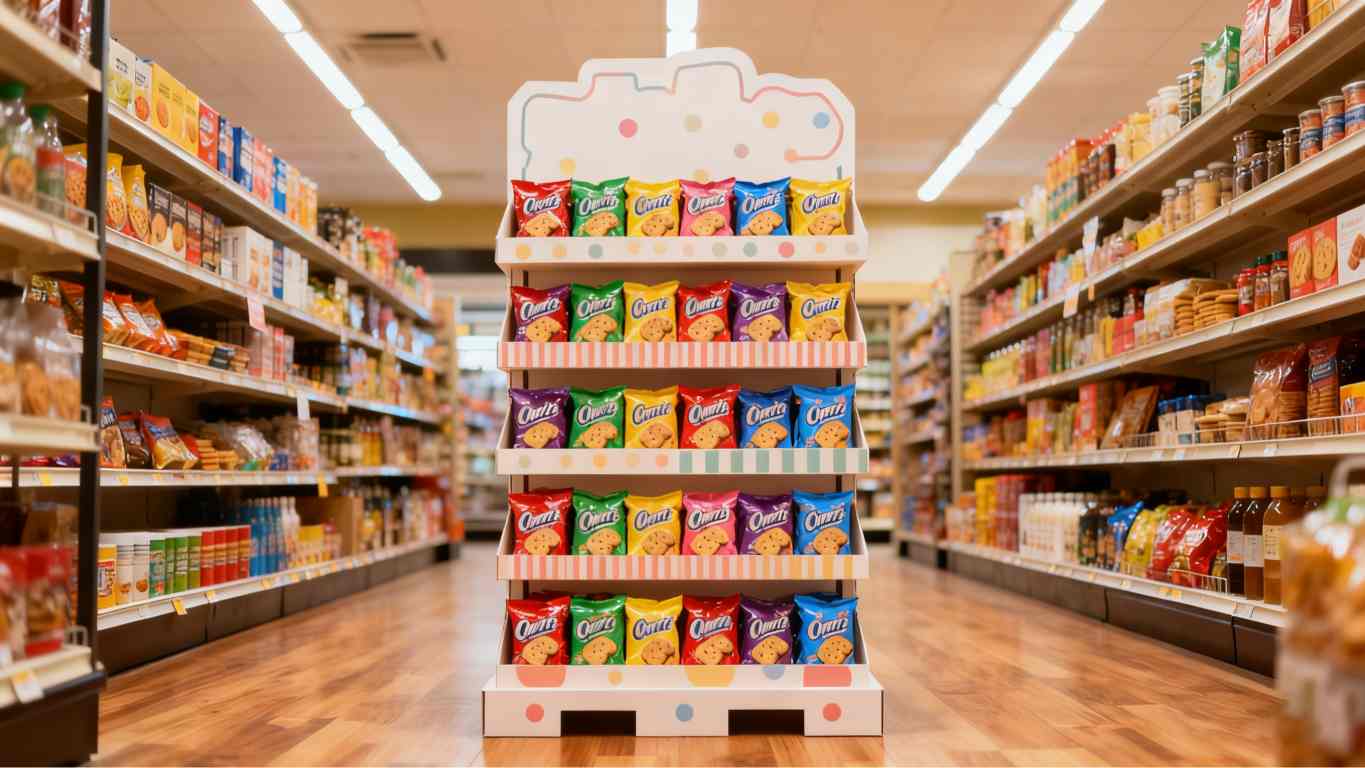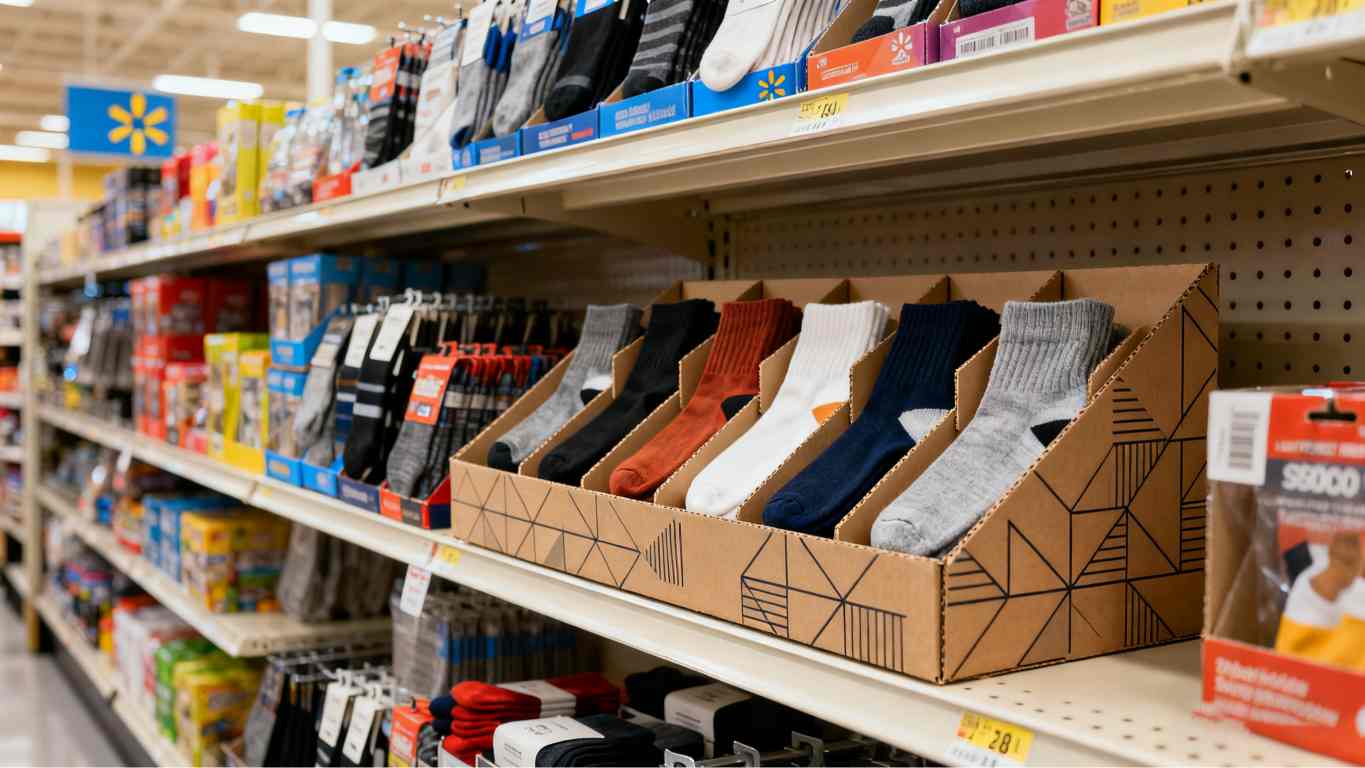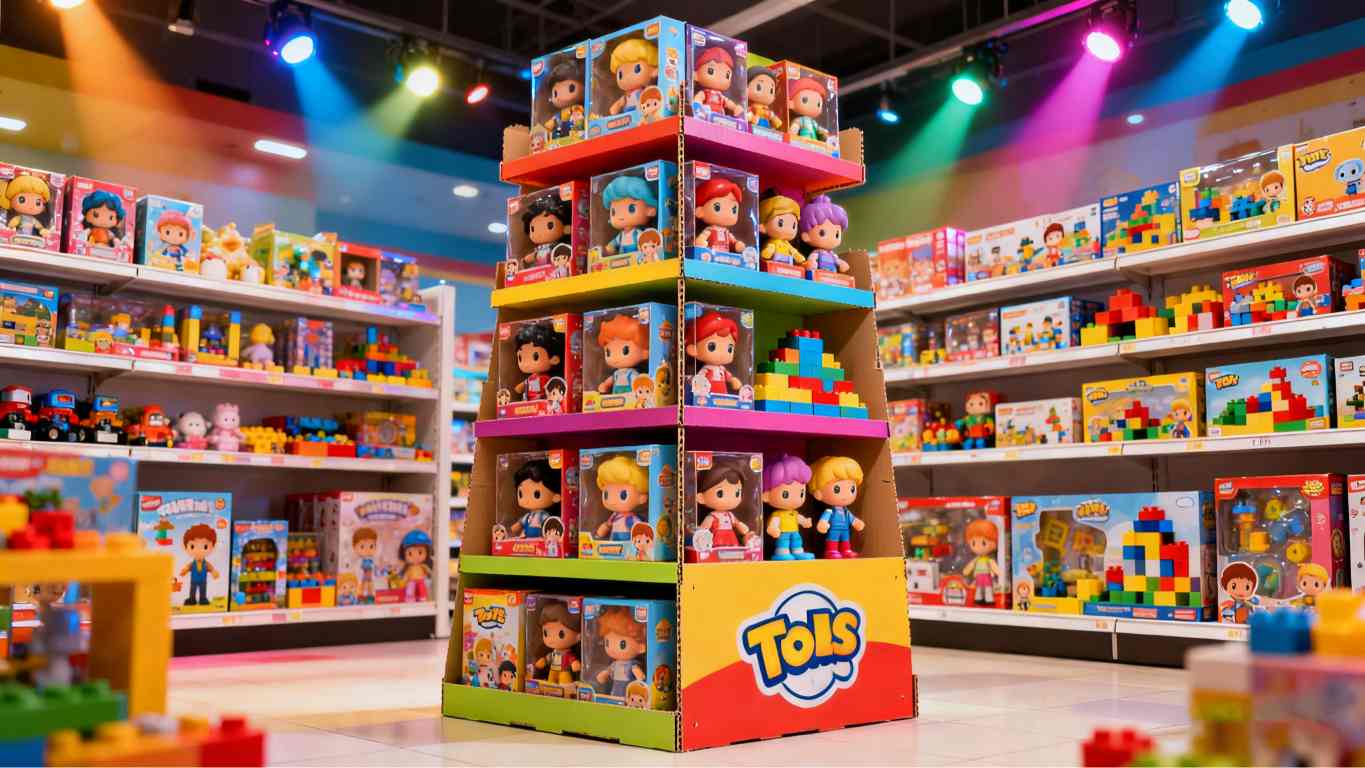Struggling to make your product stand out in crowded aisles? Your product gets lost. See how custom displays changed everything for famous brands and can for you, too.
Brands succeed with custom POP displays by creating unique experiences, reinforcing brand identity, and driving impulse buys at the point of sale. They use smart design, placement, and messaging to grab attention and convert shoppers, which significantly boosts sales.

I've seen it happen time and again over my 16 years in this business. A simple, well-designed piece of cardboard can completely change how a product sells. It's not just about looking good; it's about smart strategy. The big success stories aren't accidents. They happen when brands understand why these displays work and how to use them well. Want to know the secrets behind their success? Let's break it down together.
Why do merchandisers1 use pop displays?
Are your in-store promotions falling flat? Regular shelf space just isn't cutting it. POP displays2 grab customer attention3 exactly when and where they're ready to make a purchase.
Merchandisers use Point-of-Purchase (POP) displays to cut through retail noise4, highlight specific products, and increase impulse sales. These displays work like silent salespeople, drawing immediate attention to promotions or new items and influencing buying decisions at the last minute.
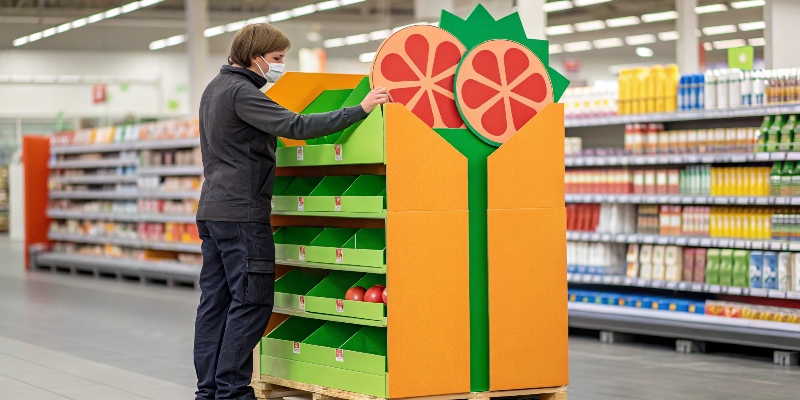
Over my years of designing displays, I've learned that merchandisers1 depend on them for a few key reasons. It really comes down to solving the biggest problems in a retail store. Working with designers like Peter, we focus on turning these challenges into opportunities. The goal is always to make the product impossible to ignore and easy to buy.
Grabbing Attention in a Busy Store
Retail stores are visually noisy. Everything is competing for a shopper’s eye. A custom POP display acts as a beacon in that chaos. I remember working with a snack company. Their chips were just one of dozens of bags on a long shelf. We created a floor display shaped like their fun mascot. The new display was bright and hard to miss. Sales nearly tripled in the first month. Why? Because people finally saw the product. It broke through the clutter and made a direct appeal.
Driving Impulse Buys
Many buying decisions are made right in the store. POP displays2 are perfect for encouraging those unplanned purchases. By placing products in high-traffic areas5, like at the end of an aisle or near the checkout, you catch shoppers when they are most open to suggestion. Think about the candy, drinks, and magazines at the checkout counter. They are there by design. We help clients identify these "hot spots" and create displays that fit perfectly, making it easy for a customer to say, "Oh, I'll grab one of these too."
Educating the Customer
A display is much more than a holder for products. It's a communication tool. You can use the space to explain key benefits, show how the product works, or tell your brand’s story. This is very helpful for new or slightly complex products. For a client launching a new kitchen gadget, we built a small screen into the display that played a short demo video. This educational piece helped customers understand its value instantly, without needing a salesperson.
What is pop branding?
Does your brand's message get lost on the shelf? Your packaging alone can't tell the whole story. POP branding6 turns a simple display into a powerful brand statement.
POP branding6 is using Point-of-Purchase displays to communicate and strengthen your brand's identity, values, and story directly to consumers in the store. It’s about making the display a core part of your brand experience, not just a cardboard stand.
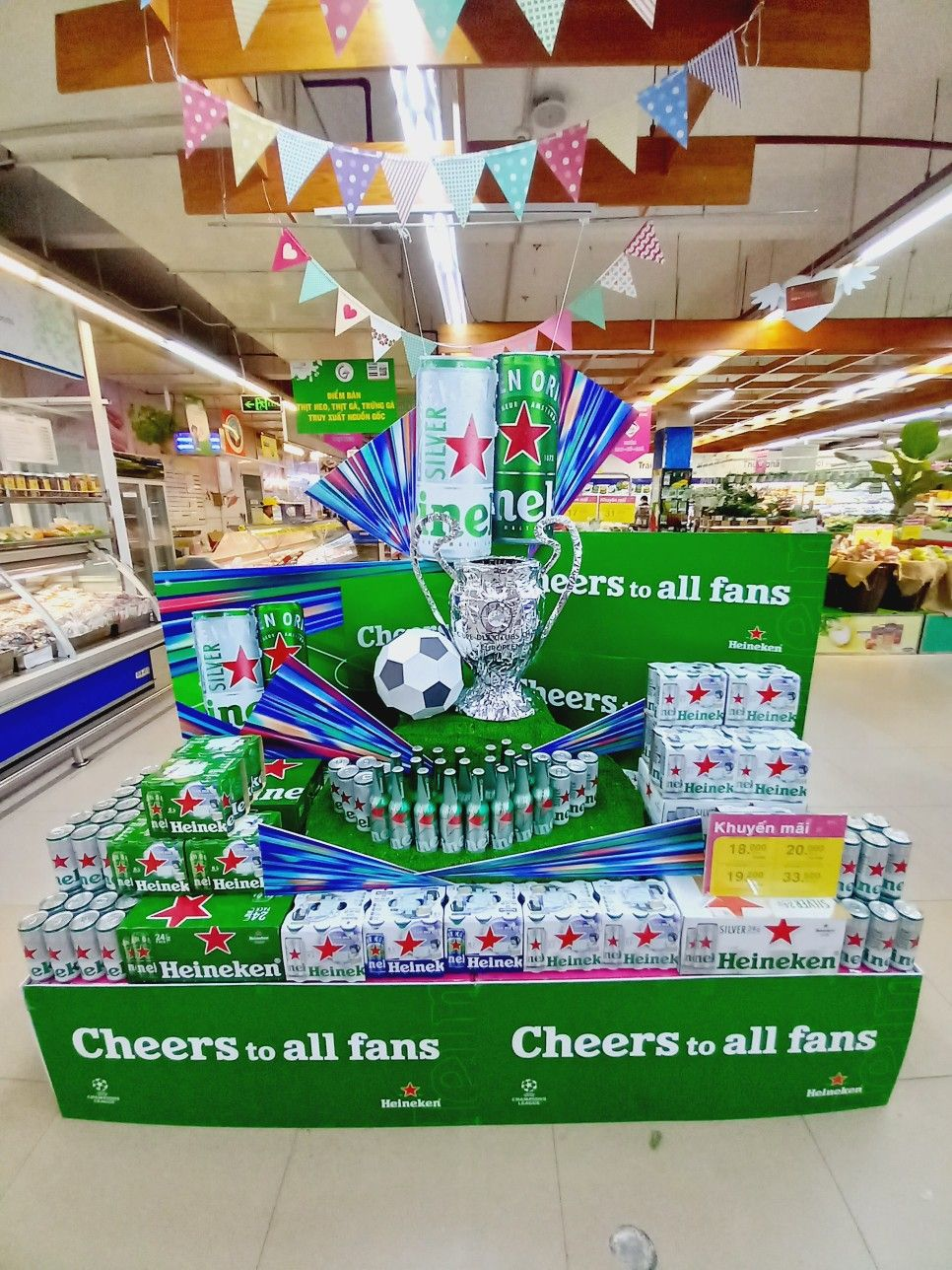
When I talk with product designers, we often discuss how a display is a physical piece of the brand. It's not separate. It's a chance to make your brand tangible and create a mini-experience for the shopper. Effective POP branding6 makes a product feel like it belongs to a brand the customer knows and trusts.
More Than Just a Logo
Good POP branding6 goes way beyond just putting your logo on a display. It is about using your brand’s specific colors, fonts, and images. Even the shape of the display can reflect your brand. For a luxury skincare7 brand, we designed a sleek, clean, and minimalist display. It used a lot of white space and simple lines, which communicated elegance and quality. For a children's toy brand, we went in the opposite direction. We used bright, bold colors and a playful, castle-like shape. The display itself became part of the fun before the box was even opened.
Creating a Cohesive Experience
The key is consistency. A customer should see your POP display and immediately connect it to your website, your social media, and your TV ads. This creates a seamless experience that builds brand recognition and trust. I worked with a coffee company that was all about being organic and sustainable. For their POP display, we used unbleached, raw-looking cardboard and printed with water-based inks. We added design elements like green leaves and earthy textures. When shoppers saw the display, it instantly reinforced the brand's eco-friendly message, making the choice to buy feel good and right.
How to integrate POP with other marketing?
Are your marketing campaigns8 disconnected? Your online buzz is not turning into in-store sales. You can bridge this gap by connecting POP displays2 with your other marketing.
Integrate POP displays2 by keeping your visuals and message consistent with your digital, social, and print campaigns. Use QR codes9 on displays to link to online content, and match in-store promotions with what you advertise online. This creates a smooth journey for the customer.
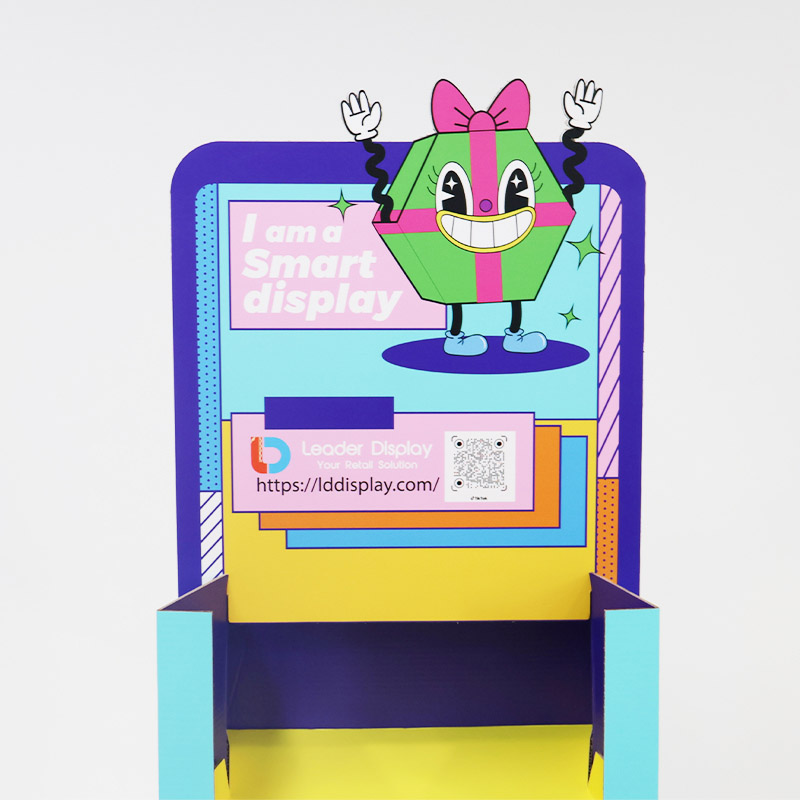
I always tell my clients that a POP display shouldn't be an afterthought. It should be planned right alongside every other part of a marketing campaign. When all the pieces work together, the impact is much bigger. It creates a full-circle experience for the customer, from their phone screen to the shopping cart.
The Digital to Physical Bridge
The easiest and most powerful way to connect your physical display to your digital world is with a QR code. It’s so simple. A shopper sees your display, scans the code with their phone, and instantly gets more information. You can link them to a "how-to" video, a special online-only discount, an entry form for a contest, or your brand's Instagram page. This turns a passive looker into an active, engaged person. We recently did this for a company selling a smart home gadget. The QR code on their display linked to a cool augmented reality demo that showed how the device would look and work in their home.
Consistent Campaign Messaging
Your slogans, offers, and images must be the same everywhere. If your Facebook ad is screaming "50% Off This Week Only!", then your in-store POP display needs to be screaming the exact same thing. Any difference creates confusion, and a confused customer usually doesn't buy. Think of your POP display as the final, crucial chapter in the story you're telling with your marketing. It’s the closing argument that seals the deal.
Integration Checklist
Here’s a simple table I share with clients to help them think about connecting their marketing channels.
| Marketing Channel | Integration Tactic | Example |
|---|---|---|
| Social Media | Use same hashtags & visuals | Run a contest where users post a selfie with the display. |
| Email Marketing | Announce in-store displays | Send an email telling subscribers where to find the product on its special display. |
| TV/Online Ads | Feature the POP display | Show the unique display in your video ad so customers recognize it in the store. |
| Website | Store Locator | Add a feature on your site showing which retail locations have the promotional display. |
Is POP marketing effective for all businesses?
Worried if POP marketing is right for your type of business? You fear spending money on a display that doesn't work. The truth is, its success depends on your product and goals.
POP marketing is very effective for most businesses with products in physical retail stores, like consumer goods10, cosmetics, and seasonal items. Its success is less about the industry and more about having a clear goal, like a product launch or a big promotion.
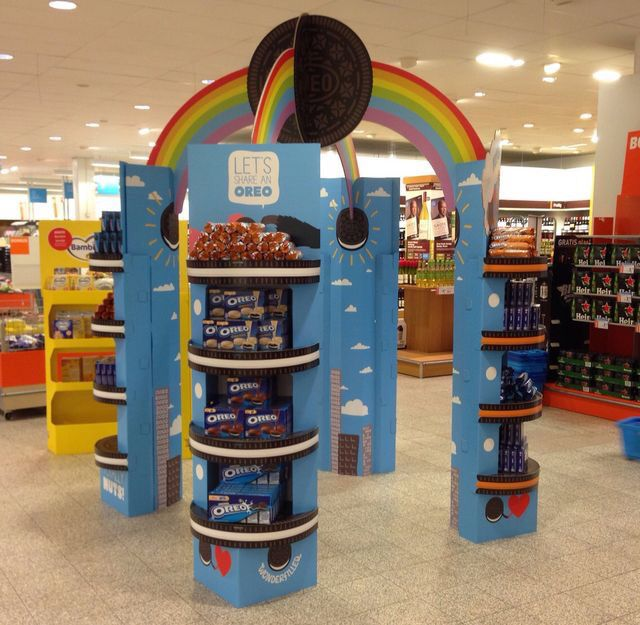
As someone who has created displays for nearly every industry, I can say that POP marketing is incredibly versatile. However, it is not a magic solution for every single product in every situation. The key is understanding where it works best and what you want it to achieve.
Where It Shines Brightest
POP marketing is a true star for products that benefit from impulse buys11 or that need to stand out from a sea of similar competitors. Think about the snack aisle, the beverage cooler, the cosmetics section, or the checkout lane. These are places where purchase decisions are made quickly and are heavily influenced by what catches the eye. I had a client who sold gourmet chocolate12 bars. They were getting lost among the big brands. We designed a simple, elegant counter display for the checkout areas of specialty food stores. That one change led to a 200% increase in sales. It put their great product in the right place at the right time.
When to Be Cautious
For very expensive, high-consideration products, a typical cardboard POP display might not be the main tool. For example, you wouldn't use it to sell custom-built furniture in a grocery store. The context is wrong. Likewise, for B2B services13 that aren't sold in a retail environment, a POP display doesn’t make sense. But the principles behind POP marketing still apply. In a car showroom or at a trade show14, the way you display the car or design your booth uses the same ideas: grab attention, communicate benefits, and make your brand memorable. It's all about adapting the strategy to the selling environment.
Conclusion
In short, successful brands use custom POP displays2 to grab attention, tell a story, and drive sales. By integrating them with your marketing, you can create a powerful retail presence.
-
Explore the critical functions of merchandisers in driving sales and product placement. ↩ ↩
-
Learn about the impact of Point-of-Purchase displays on shopper decisions and sales. ↩ ↩ ↩ ↩ ↩
-
Discover proven methods to engage shoppers and increase product visibility. ↩
-
Learn strategies to stand out in a crowded retail environment and capture attention. ↩
-
Discover optimal locations in stores to maximize product visibility and sales. ↩
-
Understand how Point-of-Purchase branding can strengthen brand messaging in stores. ↩ ↩ ↩ ↩
-
Explore how luxury brands create impactful displays that reflect their brand values. ↩
-
Explore effective strategies for aligning POP displays with broader marketing efforts. ↩
-
Discover how QR codes can bridge the gap between physical displays and digital content. ↩
-
Learn which consumer goods are best suited for Point-of-Purchase marketing strategies. ↩
-
Discover effective techniques to boost unplanned purchases at the point of sale. ↩
-
Learn how effective displays can elevate gourmet products in competitive markets. ↩
-
Understand how display marketing principles can apply to B2B environments. ↩
-
Discover how to create engaging displays that attract attention at trade shows. ↩



